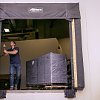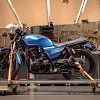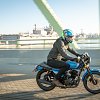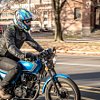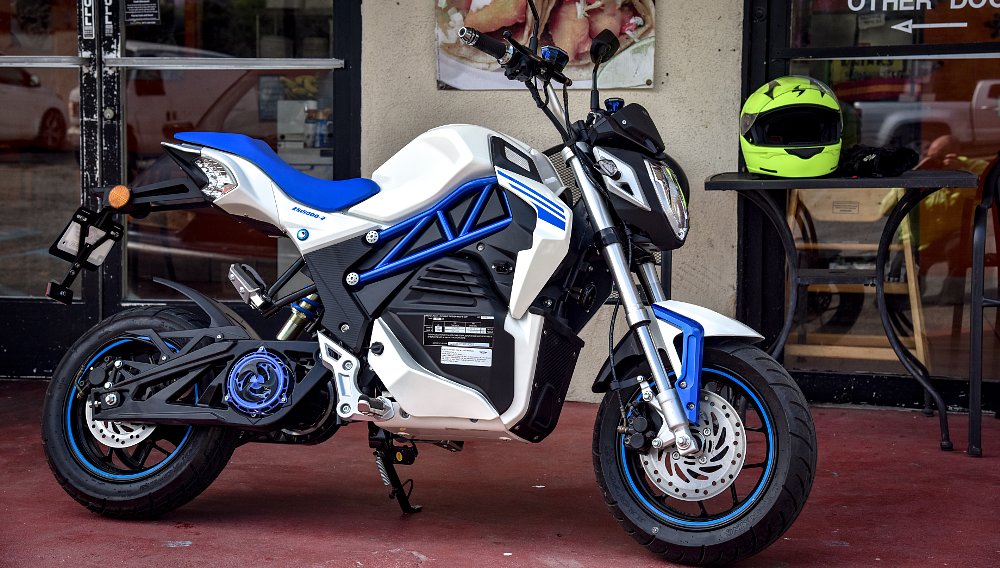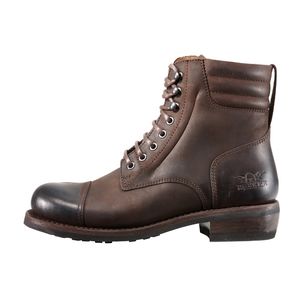It’s been almost four years since Common Tread published its first article on CSC motorcycles on April 7, 2015. It was a simple little piece about a Southern California company importing Chinese motorcycles and selling them directly to the consumer, abandoning the dealership model and thus cutting overall costs.
The comments section exploded with discussions of Chinese reliability, arguments over quality dealers, and a call to action to let us test a bike. CSC responded kindly with an invitation to fly out to California and ride any of their bikes, but they didn’t have any spare models to ship to us for an extended review. Instead of a quick, 75-mile ride in SoCal, we felt we could offer more value to our readers by having a CSC long enough for us to ride it, work on it, and find out what it's like to live with it. We respectfully declined but kept the lines of communication open.
Time moved on as it tends to do, CSC introduced new models, and interest in the brand continued to grow. This past summer, Joe Berk, a private contractor working with CSC, flew out to RevZilla headquarters to meet face to face. After a tour of our facilities and a few Philly cheesesteaks, we struck a deal for a long-term loan of the San Gabriel 250. With an MSRP of just $1,995, this is CSC’s most affordable model to date.

The CSC SG250 San Gabriel
The bike arrived at our offices in a large shipping crate, the same way it would show up to a customer’s front door. It took Joe Zito and I about 20 minutes from start to finish to get the SG250 out of the crate and ready to roll. You could do it on your own, but it went a lot smoother with a second set of hands.

The bike was shipped with fuel, oil, and a fully charged battery. All I had to install were the mirrors. After thumbing the starter a few times I quickly learned that the San Gabriel’s tiny Keima slide carburetor preferred to be started without the choke fully engaged. It also has a kickstarter, but for all of our time with the bike, we couldn’t get it started with the kicker. I came to regard this feature as more of a decoration than anything else.
The engine is a 229.5 cc single-cylinder thumper that is surprisingly smooth, thanks to the help of a counterbalancer. Power output is an extremely approachable 16 horsepower at 7,000 rpm and 13.5 foot-pounds of torque at 5,500 rpm. It’s a bike that is forgiving to new riders yet fun enough for experienced riders to enjoy if they’re going WOT.

There is a tiny, little, no-name disc brake at the front wheel and a drum brake at the back. Spoked wheels mean tubes and if you pick up a nail, you’re going to want to make sure you’re carrying tools and a patch kit, unless you want to call your buddy with a truck to pick you up. (Isn’t that right, Mr. Greaser?) The front tire is a 90/70-17 and the rear is barely any wider at 120/70-17. Regarding the brand, they merely say “Made in China.” The telescopic fork looks like something off of a Huffy bicycle I had as a kid and offers no adjustment. The rear piggyback shocks look the part and offer a basic collar for preload.
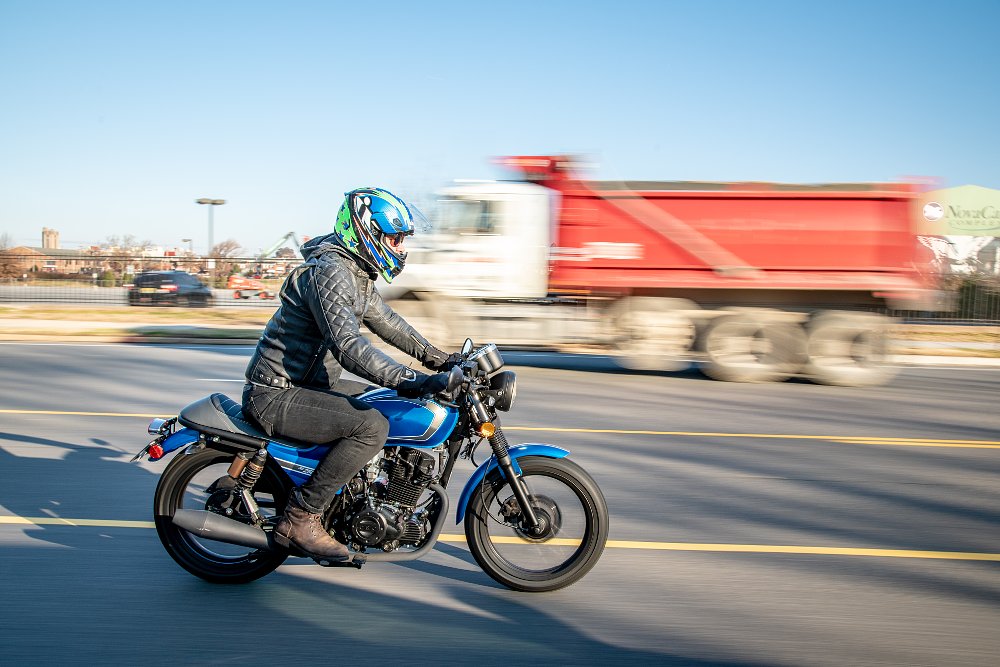
When CSC released the SG250, they decided to dub the bike a “Café Racer,” hoping to cash in on the nomenclature. The truth is, the little 250 is more of a UJM (only C instead of J). It’s comfortable and rather upright in its seating position. Steering is nice and light and it’s extremely easy to ride, unlike most of the Café Racer-styled motorcycles I have ridden in the past.
In spite of the fact that there are passenger pegs on this bike, the flat, café-style seat leaves little room for a passenger, at least with my large six-feet, three-inch, 215-pound lump of man piloting this little guy. However, it carried me around on solo adventures just fine.
That being said, one’s experience with the CSC SG250 will depend greatly on the roads you decide to traverse.

Riding the SG250
I set out on my maiden voyage with the SG250 on a warm fall afternoon. Face in the breeze, bare knuckles in the wind, and my Chuck Taylors stomping on the Kansas-sized brake pedal in an effort to slide the bike to a screeching halt at every red light between RevZilla and my lunch stop.
I didn’t travel far. It was only about a mile or so through the city to meet a couple of friends for a burger, but I was grinning the entire time. So many of the big-horsepower bikes we ride hate the city. They buck and snort at stop signs like an angry bronco ready to leap to the next red light, growing increasingly frustrated with the stop-and-go routine. But not this bike. The SG250 sat patiently, humming its relaxed song via the low-slung, blacked-out megaphone muffler.

I actually enjoyed revving it up and buzzing around the city. There was nothing intimidating about the bike. Once it was warmed up, throttle response was even, clutch pull was light, and the brakes did... OK. The CSC became my bike of choice for riding around the city.
The one downside that I noticed across the board, regardless of how I was riding it, was a very clunky gearbox. Neutral is also a bit difficult to find. It reminds me a lot of a mid-2000s Honda Shadow I rode once where I'd have to shut it off to get it into neutral. The CSC isn't that bad, but it's close.
The SG250 has no electronic safety features. No ABS or traction control. It's just you and the machine. On a particular rainy evening, I learned how easily the front will lock up in wet conditions if you’re not careful. My training kicked in and I was fine, but it’s something for new riders to keep an eye out for.

That being said, I consider the 273-pound bike to be a perfect option for beginners to make those types of mistakes on. Get out there and practice your braking drills in an empty parking lot. Learn how the bike reacts to your inputs in a safe environment and you’ll be much better equipped to keep it upright should something go sideways on the street.
When it comes to the suspension, Lance Oliver put it best when he said, “The suspension somehow manages to be too soft, but also harsh.” Something he has never quite experienced before with a motorcycle. It felt squishy when trying to corner harder but still managed to transmit sharp bumps. This is another place where the light weight works to the bike’s advantage, by making the budget suspension livable.

In an effort to test the San Gabriel’s highway capability, I set out to visit my parents. Spurgeon Senior and Barbara Jo live just outside Allentown, Pennsylvania, about 50 miles north of Philadelphia by way of the Pennsylvania Turnpike, a highway with a 70 mph speed limit. Clicking the bike into fifth gear (there is no sixth), I headed north on my great highway adventure.
Keeping the throttle pinned, the bike’s speedo indicated I was going somewhere around 80 mph. About halfway between the Lansdale and Quakertown exits, I passed a speed trap sign that disagreed, stating instead that I was topping out somewhere around 63 mph. Talking with Steve Seidner, CEO of CSC, he informed me that the speedo was under a recall and that they would be sending out replacements, free of charge.

I didn’t need a speedometer to realize that the little bike did not enjoy traveling on the highway. Everything was buzzing, from the engine to the levers. It was as if the bike was pleading with me to show it mercy. I gladly answered the call, exiting at Quakertown and opting for country two-lane blacktop the rest of the way.
Many of the routes between Allentown and Reading are the same old farm roads I learned how to ride on while I was in college. They are burned into my brain. I ran the SG250 wide open, rolling over hills and romping through corners as I navigated via memory. With its light weight and narrow tires, the SG250 changes direction almost instantly and effortlessly.

Taking the long way home, I stopped at the Market Cafe in Topton, two blocks from the house I rented when I was in school at Kutztown University. I used to make this same stop on my old Triumph Bonneville. On Saturday afternoons, you can usually find a good handful of other like-minded motorcyclists doing the exact same thing.
Reflecting on my days at school, my thoughts drifted to the CSC. If I were a college kid looking for cheap transportation, I could totally see myself commuting the six miles or so back and forth to class on the little SG250. Leaving the cafe, I stopped for fuel at the one gas station in town and found that I was averaging around 76 mpg. Factoring in the 22 percent discrepancy in the speedometer, I figure I was really getting somewhere around 59 mpg. Which is still rather impressive.
The San Gabriel proved to be much more comfortable being wound out and ridden hard on twisty farm roads than on the open freeway. If I had to tackle a Lemmy-style commute, making a trip like this every day, I’d go insane on this bike. It’s all about perspective and knowing your audience. It’ll get up to highway speeds, but I wouldn’t want to have to stick to the super slab for more than 10 to 15 miles at a stretch.

The SG250’s cost and competition
The MSRP of the CSC San Gabriel 250 is $1,995. Even after factoring in all of the costs clearly listed on their website, you’re at $2,395. You’ll also have to pay taxes and registration, as with any motorcycle. Normally, the dealership handles all of that paperwork, but because CSC opts to forgo the dealership model, it’s the buyer’s responsibility to hit up the DMV and handle the registration.
Even after factoring in all of those costs, the SG250 is arguably the most affordable new motorcycle currently available in America. I thought that perhaps Cleveland Cyclewerks would have something comparable, but at the time of writing this I couldn’t find any new models listed on CycleTrader for under $3,000.
The SG250 is almost half the price of the Honda Monkey Lemmy recently rode out in California. And it’s arguably a bigger, more capable motorcycle. Would I want to commute the 70 miles from Lemmy Mountain to RevZilla every day on the highway? Absolutely not. But could I get this thing up to highway speeds to make the nine-mile commute from my house in Northwest Philly to the Navy Yard in South Philly? Totally. And it was actually quite enjoyable.
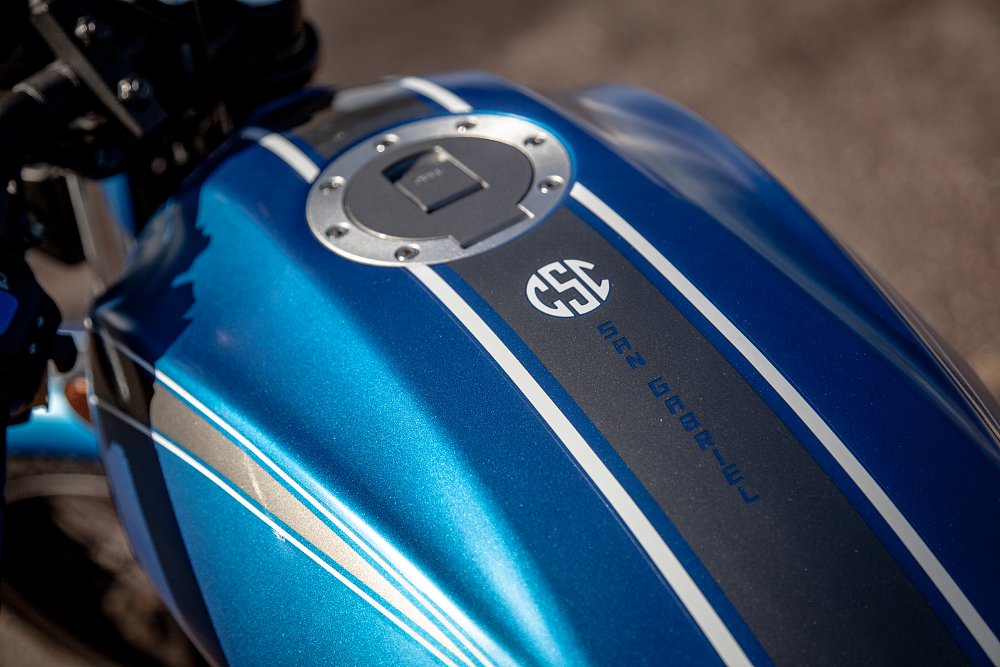
When I think about all of that, the bike this reminds me of the most is Suzuki’s TU250X. And that bike has an MSRP of $4,599. The CSC might not have the same fit and finish of its closest competitors, but I think the SG250 provides a really great option for folks looking for a brand new, affordable introduction to motorcycling.
I think it also works for people who are considering an older vintage machine for their first bike. As the owner of a 1976 CB550, I can tell you there is always something to fix on older motorcycles. Just ask Lemmy. I don’t think I’ve ridden that bike once since I’ve met him. The SG250 provides a vintage aesthetic but folks will be starting with a bike that actually runs. It’s a lot more fun to ride your first motorcycle than it is to stare at it sitting in the garage. And while you’ll have to do the work yourself (same as a vintage machine), there is a one-year, unlimited-mile warranty, to cover the cost of any parts which might fail.
So how does one go about getting a CSC repaired under warranty if there is no dealer network?

“99 percent of the time a customer calls us it’s as easy as shipping them a replacement for the defective part,” Seidner explained over the phone. “Most of the time the customer is able to do the work themselves. If not, however, our warranty covers parts and labor. So if they take it to their local motorcycle repair shop, we’ll work with that shop to make sure they are reimbursed for whatever work is needed to repair the defective issue.”
Seidner did acknowledge that the larger shops usually aren’t willing to work on these bikes. However, he said a lot of CSC’s customers who don’t like working on their own bikes have found success with getting their bike serviced at smaller independent shops. Because the bikes are so simple in their design, coupled with the fact that Seidner’s SoCal team is willing to work with independent shops in the diagnostic and repair phases of the job, in the end, the customer gets taken care of even without the personalized dealership experience.

Conclusion
Researching old Honda advertisements from the 1960s, I found a Honda 50 advertised with an MSRP of $245 in 1961 with a $10 upcharge for buyers east of the Mississippi. Playing around with an inflation calculator, I determined that Honda’s little Cub would have cost around $2,140.64 in 2018 dollars. Pretty damn close, and the CSC is arguably a lot more motorcycle for the money.
The price tag on this bike hides a lot of the San Gabriel’s sins. Its engine is not the most powerful, the brakes aren’t great, and the suspension is… well… it’s there. But the San Gabriel 250 is affordable, easy to ride, and quite a bit of fun. For the money, it’s an absolute blast. I was expecting this bike to be a chore to ride and test, but it wasn’t. The CSC 250 became my go-to bike for blasting around the city.

In our initial 500 miles with this bike, there were no issues aside from a few rattles and shakes that I wouldn’t be as willing to forgive in a more expensive model. That being said, the number one question we had from our readers was regarding this bike’s reliability. So we’re going to keep riding it.
I’m going to let the rest of the crew of Common Tread weigh in with their opinions. I’m am hoping to turn Lemmy loose on it to evaluate it from a mechanical perspective. I'd love to hear his opinion regarding everything from CSC’s rather in-depth tutorial page to his thoughts on the overall design.
As for my initial impressions, I’m stoked. I think the SG250 is priced right to get folks into motorcycling. It took me back to my early days of riding and brought a smile to my face. And if it makes motorcycling more accessible to the masses, it’s hard to not to like it.
| 2018 CSC SG250 San Gabriel | |
|---|---|
| Price (MSRP) | $1,995 |
| Engine type | OHV, air-cooled, counterbalanced single cylinder |
| Displacement | 229.5 cc |
| Bore x stroke | 67 mm x 65 mm |
| Compression | 8.7/1 |
| Power (claimed) | 16.1 horsepower @ 7,000 rpm |
| Torque (claimed) | 13.5 foot-pounds @ 5,500 rpm |
| Transmission | Five-speed |
| Front suspension | Telescopic fork |
| Rear suspension | Piggyback reservoir shocks with collar preload adjust |
| Front brake | Single piston, disc brake |
| Rear brake | Drum |
| Tires front/rear | 90/70-17; 120/70-17 |
| Wheelbase | 50.8 inches |
| Seat height | 26 inches |
| Tank capacity | four gallons |
| Wet weight (claimed) | 273 pounds |





